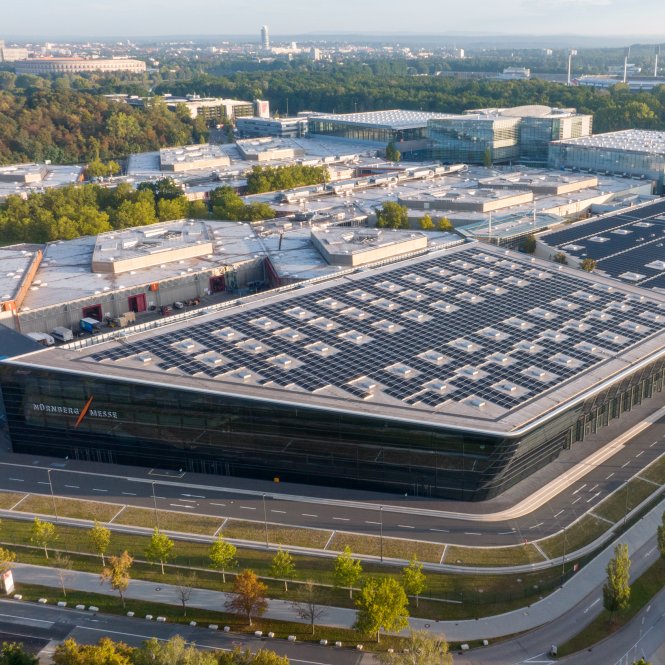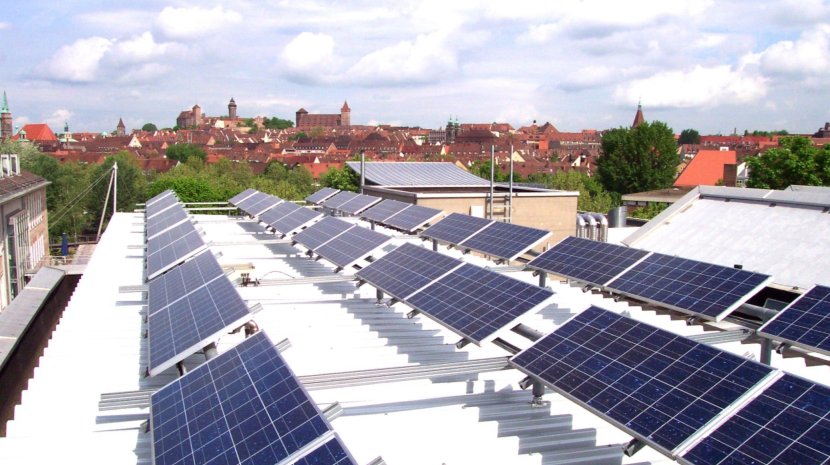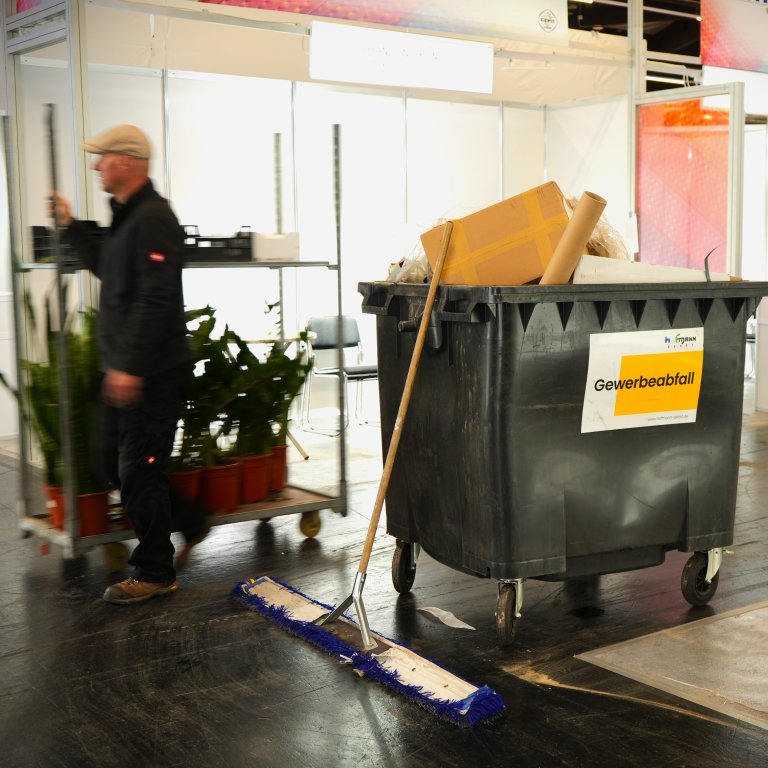

Since 1 December, solar power has been flowing from Bavaria's most powerful photovoltaic system on the hall roofs of NürnbergMesse. In the final expansion stage, the peak output will be around 20 megawatt peak (MWp), which corresponds to the electricity consumption of a small town with 20,000 inhabitants. For the time being, this is also a high point for the city of Nuremberg, which has long since become the solar leader among major German cities.
Around 12,700 photovoltaic modules have been installed on the roofs of exhibition halls 3, 3A and 3C and the North Car Park since March of this year. They already provide an output of 1.9 MWp. In total, NürnbergMesse will equip seven exhibition halls and the multi-storey car park with around 21,000 PV modules by May 2024 to achieve a total output of around 9 MWp. "The photovoltaic system brings us a big step closer to our goal of making our energy supply completely CO2-neutral by 2028," explains CEO Peter Ottmann.

In December, the Chairmen of the Supervisory Board, Lord Mayor Marcus König and Minister of State Albert Füracker, celebrated the company's first own solar power with CEO Peter Ottmann.
NürnbergMesse's photovoltaic system is an absolute showpiece and makes an important contribution to the energy transition - not only for the Free State of Bavaria, but also for the German exhibition industry.
NürnbergMesse is also relying on artificial intelligence (AI) for the construction of the PV system. The "digital twin" developed together with system planning partner HEITEC Innovation GmbH enables efficient load management in the planning and operation of the system. Nuremberg's Lord Mayor Marcus König, Chairman of the Supervisory Board of NürnbergMesse, emphasises: "By producing its own solar power, NürnbergMesse is continuing on its consistent path of sustainability and at the same time sending a strong signal for climate protection in the city and metropolitan region."
The city of Nuremberg has already come a long way along this path. The nationwide comparison tool "Wattbewerb" puts Nuremberg at the top of the list of cities over 500,000 in terms of installed photovoltaic capacity per inhabitant. According to the market master data register, there were 4,451 PV systems with a total net installed capacity of around 69 MWp in Nuremberg as at 31 December 2022. In 2022 alone, around 750 systems with an output of around 6.5 MWp were added in the city. "For us, the expansion of solar energy is an important building block in achieving our climate protection goals," says Britta Walthelm, Head of Environmental Protection, "which is why we want as many photovoltaic systems as possible on our roofs."

PV system with red modules on the listed town hall on the main market square
In order for people to join in, impetus is needed. The city provided the first impetus back in 2010 with the "Nuremberg Solar Initiative" information platform. It uses this to launch solar projects on an ongoing basis, keeps citizens and companies up to date on the topics of solar power and heat and at the same time provides local support in the search for suitable partners.
Since this October, the free "Solar and Green Roof Register" has provided a further incentive to boost solar energy: with the help of an online map application, homeowners can now check from the comfort of their own home whether the solar radiation on their own building roof is sufficient to utilise solar energy and whether a PV or solar thermal system is economically viable. Britta Walthelm: "You can also see whether green roofs might be an option". More information at: www.solarinitiative.nuernberg.de

PV system on the Norishalle of the city of Nuremberg
The Nuremberg city administration has also committed itself to achieving climate neutrality by 2035. The city's building stock plays a central role in the roadmap for climate protection and energy saving. Two concrete steps in this direction have already been taken: In February 2022, the city decided on stricter specifications for the energy quality of buildings and the promotion of renewable energies for both heat and electricity supply.
As many photovoltaic systems as possible are to be installed on Nuremberg's roofs.
And of course, Solar City Nuremberg is once again focussing on photovoltaics: new municipal buildings are generally to be equipped with a maximum-sized PV system. The municipal PV strategy adopted in autumn 2022 applies to all existing roof areas on municipal buildings: PV systems with a total output of around 17 MWp are to be installed there by 2035.



